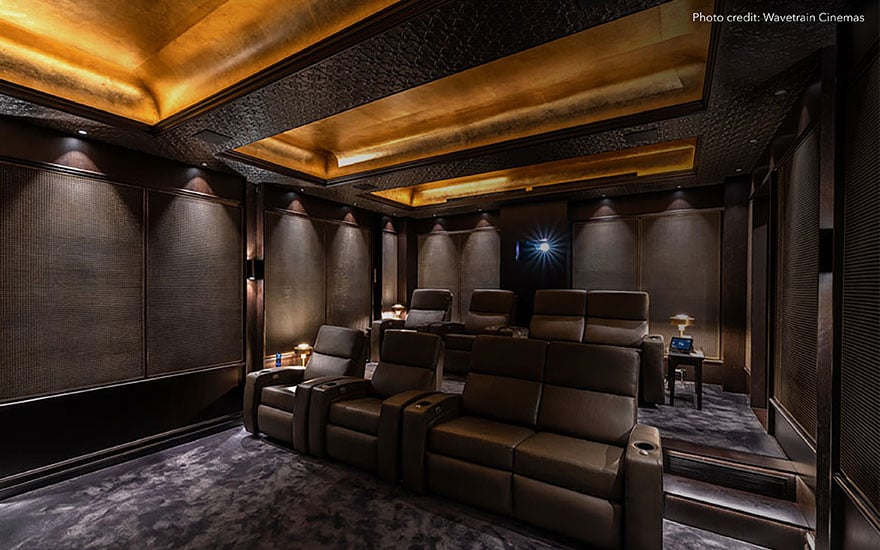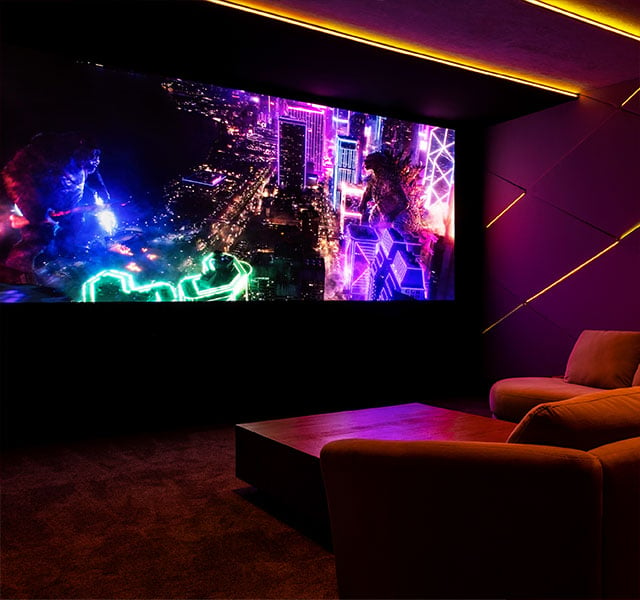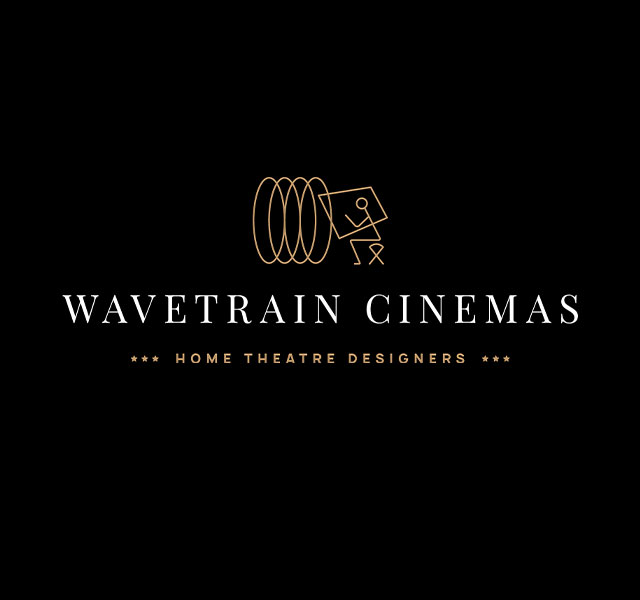Get an exclusive look at the design and tech behind this stunning premium home theater
Photos courtesy of Wavetrain Cinemas
In the realm of high-end home cinema, few projects stand as prominently as The Cloister Cinema, the recipient of the prestigious 2023 CEDIA Best Global Home Cinema award. This exquisite project, crafted by Australia-based Wavetrain Cinemas, is celebrated not only for its design brilliance but also for its advanced use of projection technology, particularly the Christie M 4K25 RGB pure laser projector. Wavetrain Cinema’s managing director David Moseley, the visionary behind this project, offers an insightful look into how The Cloister Cinema came to life and how it has set a new benchmark in luxury home cinema.
Realizing a vision
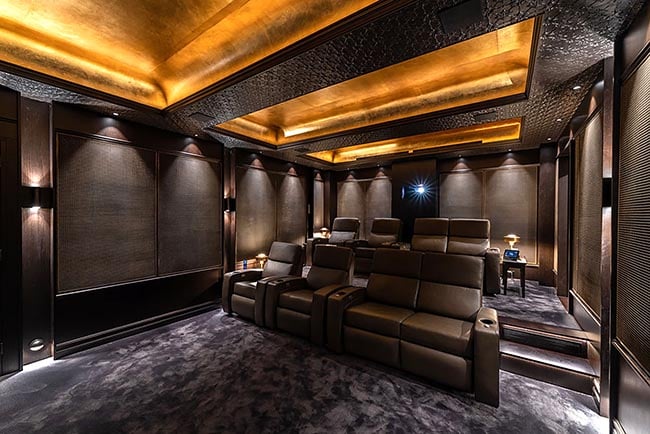
The Cloister Cinema began with a unique challenge. The client’s brief was simple yet ambitious: to deliver a cinema experience that would astonish and delight. There was no predefined design concept, allowing Wavetrain Cinemas the freedom to innovate and craft a truly bespoke cinema. The design team was inspired by the gothic-style windows of the client’s historic home, which sparked the concept of a church cloister entrance leading to a luxurious basement cinema. This idea was rooted in Wavetrain’s philosophy of creating immersive architectural experiences rather than just functional spaces.
“We push aesthetic boundaries because our clients seek an escape not just into a movie, but through the theatrical experience of great architectural design,” says Moseley. “Few peers match our level of detail, but total control is essential to deliver unique, boutique designs while honoring our profession.”
Balancing aesthetics with acoustic and technical requirements presented significant challenges. The basement location required controlling noise from the tiled floor above and integrating an effective ventilation system. To address these issues, Wavetrain implemented a comprehensive acoustic design, including Kinetics Noise Control, RIM floating floors with ISOMAX resilient mounts, and meticulous soundproofing measures, including an elaborate air-conditioning system. The result is a cinema with a noise floor of < NC20, ensuring a very quiet and immersive viewing environment.
Creating outstanding visuals
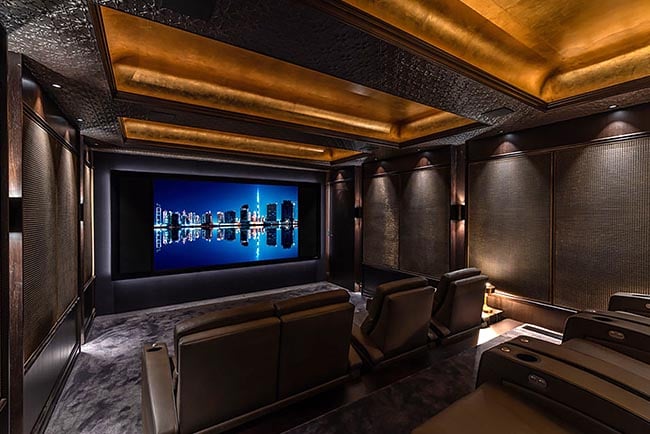
Central to the cinema’s success was the M 4K25 RGB pure laser projector. Moseley explains, “Our goal was to provide a system that produced approximately 100-200 nits and to deliver Rec. 2020 color space. The Christie M 4K25 RGB was chosen for its ability to display Rec. 2020, coupled with its superior contrast ratio and high brightness of 25,300 lumens.”
The projector’s capabilities significantly enhanced the visual impact of the cinema. “Initially, the M 4K25 RGB’s brightness was set at 50%, and after updates to the Lumagen video processor, we increased it to 60%,” says Moseley. This adjustment, along with careful calibration, ensured a final measured brightness of 130 nits, which provided a perceived brightness closer to 200 nits.
The projector’s 7000:1 on/off contrast and 1100:1 ANSI contrast contributed to exceptional black levels and overall image quality. To enhance perceived contrast, a Screen Research masking screen and a low-gain screen were used, which improved black levels for dark scenes. “This combination of advanced projection technology and precise calibration enabled the cinema to deliver stunning visual performance.”
Summing up the M 4K25 RGB’s impressive performance, Moseley adds, “Our aim was to deliver superior color saturation and contrast. The M 4K25 RGB met these needs perfectly, allowing us to achieve the desired visual impact.”
Overcoming installation challenges
Installing and setting up the Christie M 4K25 RGB projector presented unique challenges, especially with ventilation. The projector was vertically mounted and housed in an engineered hush box with a double 6mm optically coated glass assembly. The ventilation system was carefully designed to manage the heat generated by the projector, which could affect the room’s noise floor. Moseley notes, “The biggest issues we faced were with ventilation, as the exhaust is at the bottom when vertically mounted. We installed sensors in the hush box and monitored the system over time, making small adjustments to optimize airflow inside the box.”
Moseley emphasizes that managing the projector’s heat and noise was critical for achieving the desired sound quality. Despite the challenges, the team successfully maintained a noise floor of less than NC20, ensuring that the cinema remained exceptionally quiet even when the projector and ventilation systems were operating. “It’s the small details that ensure the cinema’s quiet ambiance and optimal performance, and I’m glad that we managed to achieve that.”
The impact of award recognition
Winning the CEDIA Best Global Home Cinema award is a significant achievement for Wavetrain Cinemas. According to Moseley, the recognition underscores the company’s commitment to detail and excellence in both design and technical execution. “What I hope impressed the judging panel is our attention to detail and our ability to document, design, and perform audio/video calibrations,” he says.
While the award solidified Wavetrain’s reputation in Australia, where Moseley is already well-known, it also enhanced the company’s standing on the international stage. “This award has opened new opportunities and changed the perception of our work,” Moseley reflects, adding that the recognition has led to invitations to conduct lectures on home cinema design in India and Europe. It has also led to potential expansion into the commercial studio market, reflecting a growing interest in Wavetrain’s expertise in small room acoustics.
Future trends and innovations
Looking ahead, Moseley is excited about several emerging trends in home cinema technology. He points out that while MicroLED screens are gaining popularity, they present challenges that are not easily addressed, such as room acoustics and audio quality. In contrast, modern RGB pure laser projection systems offer a superior movie experience and are better suited to residential environments.
Moseley also shares his thoughts on the trend of infrasonic bass—bass below 20Hz—which has gained a cult following despite its limited practical application in cinema. He cautions against chasing technologies that may not deliver the desired outcomes, emphasizing the importance of achieving clean, tight bass performance down to 20Hz first, and ensuring that new technologies enhance rather than compromise the overall system.
Staying ahead of the curve
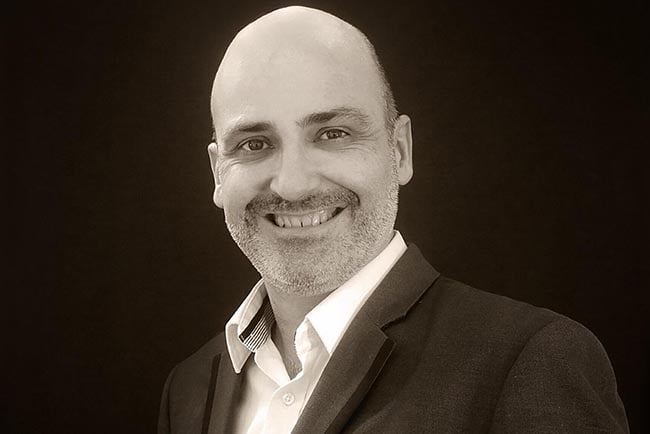
To stay ahead of technological advancements, Moseley builds strong relationships with industry experts and participates in beta testing for new products. His commitment to thinking outside the box and providing innovative feedback to manufacturers like Christie ensures that Wavetrain Cinemas remains at the forefront of design and technology. Reflecting on his approach, Moseley says, “I pride myself on being a lateral thinker and continually seeking new perspectives.”
The Cloister Cinema exemplifies the pinnacle of home cinema design and technology, blending aesthetic vision with technical excellence. The selection of the Christie M 4K25 RGB pure laser projector has been instrumental in achieving the cinema’s remarkable visual performance. This award-winning design and forward-thinking approach set a new standard for luxury home theaters. As Wavetrain Cinemas continues to innovate, its projects are poised to inspire and elevate the home cinema experience for discerning clients worldwide.
